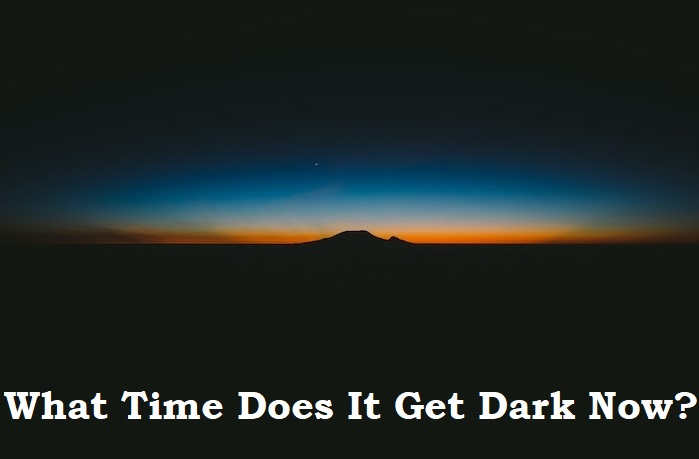In this post, we describe the sun’s position in the sky and what time it gets dark now. We also discuss what time it gets light now and when it gets dark at the equator.
The Earth rotates around its axis at a speed of about 1,000 kilometers per hour. Because it is spinning so fast, the Earth is not a perfectly still body. The planet has an east-west component of motion, which means that it is rotating eastward as it revolves around the Sun. This east-west component is called “obliquity” and the direction in which the Earth rotates in the direction of its “pole”.

Table of Contents
What Time Does it Get Dark?
In this post, we describe the exact times of sunrise and sunset in different parts of the world. We also provide information about the time zones used around the world and the relationship between time zones and daylight saving time.
Note: The sunrise and sunset times shown here are for a given day only. They do not represent a monthly or annual average. For that, use our monthly sunrise and sunset tables. Daylight Saving Time in 2018 Many countries across the world, including Canada, the United States, Brazil, and many other countries that observe daylight saving time (DST), observe it from the last Sunday in March to the first Sunday in November. Some of these countries have switched to summertime permanently.
When Does the Sunset?
This article provides a comprehensive guide to understanding when the sun sets, how long it takes to rise, and the best times to visit local attractions.
There’s no question that the sun sets earlier in Los Angeles than in many other cities, and that means you need to adjust your schedule accordingly. As a rule of thumb, you can safely assume that the sun sets around 5:30 p.m. in Los Angeles, which means that if you want to see the sunset at Disneyland or at the beach, you need to be there around 4 p.m.
What Time Does it Get Dark?
In this post, we describe what time it gets dark in different parts of the world and explain the difference between sunset and sunrise.
The length of daylight varies throughout the year and depends on where you live. It’s not as simple as saying “it gets dark at 5 pm on Monday”. Daylight is affected by a number of factors.
What Time Does it Get Dark in Florida?
In this post, we discuss the best times to go fishing in Florida. We also share some of our favorite places to fish and the best time of year to do so.
I love the early morning hours when the sun is just beginning to rise, and the air is cool and fresh. This is when I like to fish.
What Time Does it Get Dark in Miami?
In this post, we describe what time it gets dark in Miami, Florida and how to calculate the sunrise and sunset times for your location.
In Miami, Florida, the sun rises at 7:00 AM and sets at 7:00 PM. The time of sunrise is calculated by adding 6 hours to the time of the first light (the time when the sun is just above the horizon). The time of sunset is calculated by subtracting 6 hours from the time of the last light (the time when the sun is just below the horizon).
What Time Does it Get Dark in San Francisco?
It depends on your location.
In the northern hemisphere, it gets dark somewhere around 10 pm and in the southern hemisphere, it gets dark around 4 pm.
In most places in California, the sun sets at 9 pm. If you are in San Francisco, you would be able to see the sunset around 8 pm, but you wouldn’t see the sunrise until 11 am.
There’s a little bit of light pollution from LA and a few other places, but it’s nowhere near as bad as people say. I don’t know how bad it is in San Diego or Sacramento, but if you live in the city, you can always find a place that has no light pollution, even if it is a little further away. The only place I have seen the moon rise in the morning is on the west coast of Canada. It’s always beautiful there. If you have never been to the UK, I would recommend seeing some daylight. The UK has some of the best night skies in the world. I’ve only been to the UK once. I was there for about 2 weeks in the summertime.
Conclusion
In conclusion, the sun is the ultimate source of light. The only thing that can compete with it is the moon, which reflects light. However, even the moon does not compete with the sun because the moon’s reflection is very weak.
The moon is a pale reflection of the sun, and even though it appears to be full, it has a surface area that is 1/50th of the sun. It’s only when the moon is in conjunction with the sun, or near to it, that you can see a reflection of the sun. This article will help you calculate the sunrise and sunset times for your location.
